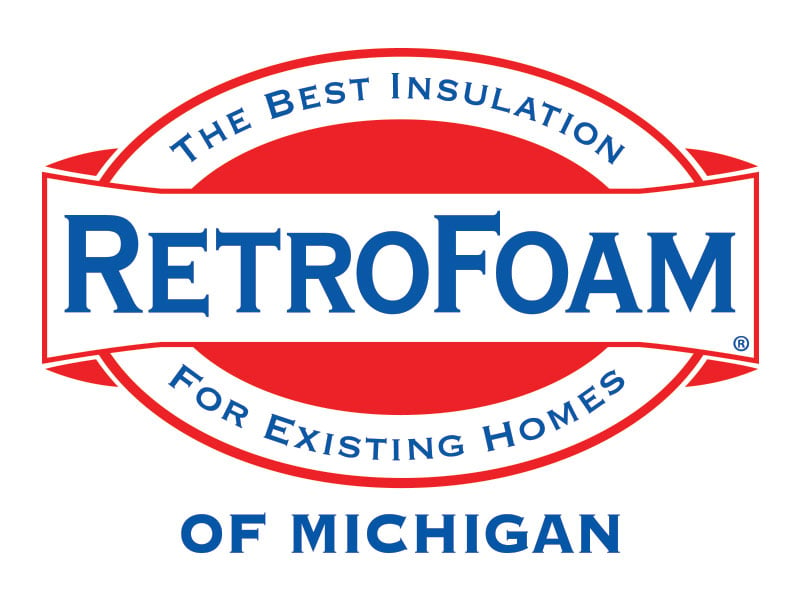Spray Foam Insulation: Expectations vs. Reality for Homeowners


When you're investing in home upgrades, it's easy to get swept up in all the promises you read online.
Spray foam insulation is no different -- the expectations are high, but does it live up to the hype?
At RetroFoam of Michigan, we've been installing foam insulation since 2002. Along the way, we've heard every myth, misconception, and question you can imagine. That's why we're setting the record straight with a realistic look at spray foam insulation -- the pros, the limitations, and what it really does for your home.
Let's take a closer look at what homeowners expect versus what foam insulation actually delivers.
Expectation: Foam Insulation Completely Soundproofs a Home
Reality: It dampens sound, but won't make your home silent.
One of the most common spray foam insulation myths is that it will completely soundproof your house.
Here's the reality: foam insulation -- especially injection foam in walls and open cell spray foam in attics -- offers excellent sound dampening, reducing outside noise by up to 80 percent in some cases. However, it doesn't fully block all sound like dedicated soundproofing systems can.
Pro tip: Open cell spray foam performs better than closed cell when it comes to reducing noise.
Expectation: Foam Insulation Costs the Same as Fiberglass or Cellulose
Reality: Spray foam is more expensive, but offers a better long-term value.
If you're comparing upfront prices, foam insulation will seem more expensive than traditional options like fiberglass or cellulose. But there are reasons for that:
- Foam insulation creates a continuous air seal, which traditional materials can't.
- It requires specialized equipment and trained contractors -- not something you can pick up at a home improvement store.
- It lasts the life of the home, whereas fiberglass and cellulose often need replacing in 15 years or less.
And don't forget -- utility rebates and energy savings can help offset the higher initial cost.
Expectation: Spray Foam Insulation is a DIY Project
Reality: DIY spray foam kits can cause more harm than good.
You can buy a froth pack and spray a small rim joist area yourself, but it's easy to apply foam incorrectly. Uneven coverage wastes material, leaves gaps, and reduces effectiveness.
Unless you have experience, it's safer, and often cheaper in the long run, to call in a professional.
Expectation: You Can't Run Wires Through Foam Insulation
Reality: Most foam types are pliable enough for electrical work.
Contrary to popular belief, electrical work isn't off the table once foam is installed.
- Injection foam is soft and easy to push wiring through.
- Open cell spray foam is a bit denser but still flexible.
- Closed cell spray foam, however, is much more rigid -- and that's where you may run into issues.
With closed cell foam, it's sometimes necessary to reroute wiring or open up drywall, depending on the situation.
Expectation: Spray Foam Must Meet Prescriptive R-Value to Pass Code
Reality: Foam insulation can pass code based on performance.
Traditional codes rely on prescriptive R-Values -- a number that measures resistance to heat flow. But foam insulation can also pass code based on actual performance.
Tools like REScheck allow contractors to model how the home performs as a whole, factoring in air sealing and assembly types. If it performs better than the prescriptive minimum, it passes.
Expectation: Foam Insulation is Highly Flammable
Reality: RetroFoam of Michigan's materials are Class One Fire rated.
Yes, foam is made of plastic, but the spray and injection foams used by RetroFoam of Michigan are Class One Fire rated. That means:
- Flame spread index is less than 25.
- Smoke development index is under 450.
These ratings meet building code requirements and ensure your home is safe during a fire event.
Expectation: Closed Cell Spray Foam Stops Active Leaks
Reality: It blocks moisture, but won't fix existing leaks and could lead to bigger problems.
Closed cell spray foam is water impermeable -- it resists moisture from getting in. But it won't fix an existing leak. In fact, it can hide the problem, leading to even more damage down the line.
If you've got water coming in, fix the leak first. Then install foam insulation for long-term moisture control.
Learn More About What Foam Insulation Can (and Can't) Do
Spray foam insulation isn't a miracle fix -- but it is one of the best ways to make your home more energy-efficient, comfortable, and durable when it's installed correctly and used appropriately.
Want to keep digging into foam insulation facts, misconceptions, and performance tips? Check out the Learning Center on our website, or talk with one of our specialists for answers tailored to your home.
Key Points:
- Foam insulation reduces noise but doesn't fully soundproof a home.
- It's more expensive up front than fiberglass or cellulose, but lasts longer and performs better.
- DIY spray foam kits can lead to uneven coverage and wasted material.
- You can still run wiring through injection or open cell foam.
- Foam insulation can pass code based on real-world performance, not just R-Value.
- Materials used by RetroFoam of Michigan are Class One Fire rated and tested for flame spread and smoke.
- Closed cell foam is moisture resistant, but it doesn't stop active leaks -- those must be fixed first.
Related Articles
Clearing Up Misconceptions about Spray Foam Insulation
Open Cell vs Closed Cell Foam Insulation: Which is Better for My Home?
Answers to the Most Frequently Asked Questions About Foam Insulation for Existing Homes
About Amanda Emery
Amanda previously has worked as a breaking news and crime reporter, TV news producer, and editor in Flint and Detroit. Throughout her career as a journalist, she has won several awards from The Society of Professional Journalists - Detroit Chapter and the Michigan Press Association. As part of the RetroFoam of Michigan family, Amanda uses her experience as a journalist to write content that will help educate homeowners on the benefits of foam insulation. When Amanda isn’t writing, she’s spending time with her husband and rescued huskies. She also loves knitting, making art, cooking, and hosting dinner and a movie night for friends and family.


